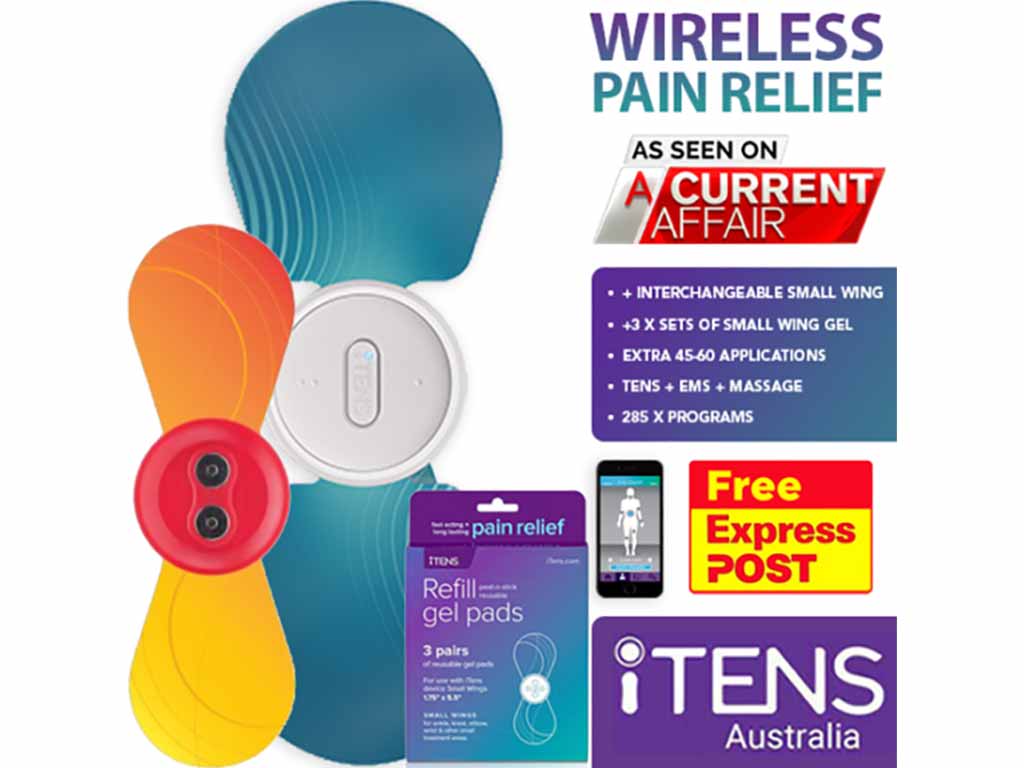
A Transcutaneous Electrical Nerve Stimulation or TENS pain device is a technology for pain relief. It is a medical device that dispatches electrical currents through electrode pads attached to the skin. Accordingly, these impulses travel along the nerve fibres. The activity can interfere with the transmission of pain signals to the brain and encourage the body to produce endorphins. With such analgesic effects, TENS can treat various conditions. It can manage acute pain and chronic pain conditions.
Pain is a common issue that many people face daily. Traditional methods of pain relief often involve painkilling medications, which can have unwanted side effects. Thus, it has led many individuals to seek out alternative forms of pain relief. One promising solution is TENS therapy. It provides a safe and effective analgesia for various types of pain. This article will present the TENS pain relief unit, including how it works and the treatable types of pain.
What is a TENS Pain Device?
A TENS pain device is an electronic device designed to alleviate discomfort. It functions by sending electrical pulses through the skin to the nerve fibres beneath. Medical practitioners, pain management specialists, and chiropractors commonly recommend TENS devices. These health professionals often suggest TENS therapy for patients dealing with painful conditions.
TENS units come in wired and wireless models. Wired devices have electrodes that connect to the machine through lead cables. On the other hand, wireless models provide more freedom of movement. It has electrodes that communicate with a controller remotely. It makes them more convenient for active users. Nevertheless, users can control the therapy manually or on a smartphone via Bluetooth.
Moreover, using the TENS machine requires following simple steps. Begin by cleaning the skin where to apply the electrodes. Accordingly, attach the adhesive pads of the electrodes to the skin, near or directly over the area of discomfort. Next, turn on the device and adjust the settings. Start at the lowest setting and gradually increase it to a comfortable intensity. Use the device for 15 to 30 minutes.
History of TENS Units
- 2500 BC: Ancient Egyptians used electric fish to treat conditions.
- 18th Century: The exploration into the medical application of electricity began with greater scientific rigour. They utilised electrical currents to treat patients suffering from various conditions.
- 1960s: The first modern, portable TENS unit was developed.
- 1970s and 1980s: TENS units were popular among medical professionals and patients for their non-invasive approach.
- 1990s: Numerous studies began to support its benefits, leading to broader acceptance within pain clinics and the medical community.
- 21st Century: Seen further innovation with the integration of digital technology into TENS units. Programmable settings, rechargeable batteries, and wireless functionality occur.

How a TENS Pain Device Works
Firstly, the TENS pain device encourages the production of endorphins. The TENS unit emits electrical impulses which stimulate the nerve fibres that initiate the release of endorphins. Endorphins are the natural pain relievers of the body. These biochemicals bind to opioid receptors in the brain and spinal cord. Thus, it decreases the pain intensity and generates a sense of well-being.
Secondly, the analgesic effects of TENS can be attributed to its influence on the pain gate mechanism. According to this, the gate, located in the spinal cord, can either allow or block pain messages from reaching the brain. The electric currents can stimulate the non-painful nerves that send signals faster than the nerves that transmit pain. Hence, this process effectively “closes the gate”, preventing the pain signals from passing through.
In addition, TENS assists in enhancing blood circulation. The electrical pulses improve blood flow to the targeted area, which is crucial for the healing process. Enhanced circulation delivers oxygen and nutrients to the body tissues, facilitating the removal of waste products and reducing inflammation. Nevertheless, it accelerates the healing process and reduces discomfort.
Benefits of TENS Therapy
Foremost, the device operates externally. It ensures that users avoid the discomfort and risks associated with surgical interventions. It does not need incisions or internal procedures. Secondly, TENS therapy stands out for its ability not to rely on medications. It is particularly beneficial for individuals seeking alternatives to pharmaceuticals, whether due to side effects or potential for dependency.
Another critical advantage of TENS units is their adjustability. Users can tailor the pulse amplitudes, pulse rates, and pulse durations. The customisation ensures that each individual can find the optimal settings. Additionally, TENS therapy is an economically viable option. It can be used multiple times.

Types of Pain Treatable with TENS Pain Device
TENS pain device can quickly provide relief for acute pain conditions. It occurs suddenly and in the short term. It often results from sports injuries, surgeries, tension headaches, and period cramps. Accordingly, TENS therapy can effectively manage chronic pain conditions. It is persistent and lasts for months or even years. It may include fibromyalgia, arthritic pain, neck, shoulder, and backaches.
Furthermore, electrical stimulation can address neuropathic pain or nerve pain. It stems from nerve damage and often results in a burning sensation. It may involve diabetic neuropathy and peripheral neuropathy. Additionally, TENS treatment can aid musculoskeletal pain. It affects the bones, muscles, and ligaments. It may include osteoarthritis pain, joint pain, rheumatoid arthritis, and knee pain.
Lastly, muscular pain benefits greatly from TENS therapy. It often arises from sore muscles, spasms, strain, and overuse. The electrical stimulation helps relax the muscles to relieve stiffness and pain and promotes healing by increasing blood flow. Overall, the TENS unit leverages the natural pain relief mechanisms of the body to manage and relieve different types of pain.
Are There Potential Side Effects?
Users may experience minimal side effects, though these are generally minor and manageable. Skin irritation presents as one of the common side effects. It typically occurs at the electrode placement site. To minimise this risk, it is essential to follow the electrode placement guidelines and clean the skin before placing the pads.
Also, allergic reactions are possible. Some may have sensitivities to the adhesive pads. Using hypoallergenic pads can significantly reduce the likelihood of an allergic reaction. Additionally, muscle twitching can occur. While this might be uncomfortable, it is generally not harmful. Adjusting the settings to a comfortable level can mitigate this side effect.
Conclusion
Overall, TENS pain devices are a popular and effective option for managing discomfort. The history of TENS began in 2500 BC and saw further innovation in the 21st century. Accordingly, it is a wired or wireless electrical device that emits electrical pulses. It delivers the impulses to the body via electrodes placed on the skin. These currents can interfere with the pain messages. Also, the stimulation can prompt the production of endorphins and assist in enhancing blood circulation.
Additionally, TENS therapy presents various benefits to users. It does not need invasive procedures or the intake of medications. Furthermore, the stimulation parameters are adjustable, and the treatment is economically viable. The therapy is also versatile. It can treat numerous conditions, including period cramps, fibromyalgia, diabetic neuropathy, osteoarthritic pain, and sore muscles. However, recognising the potential side effects of TENS is crucial for safety.







